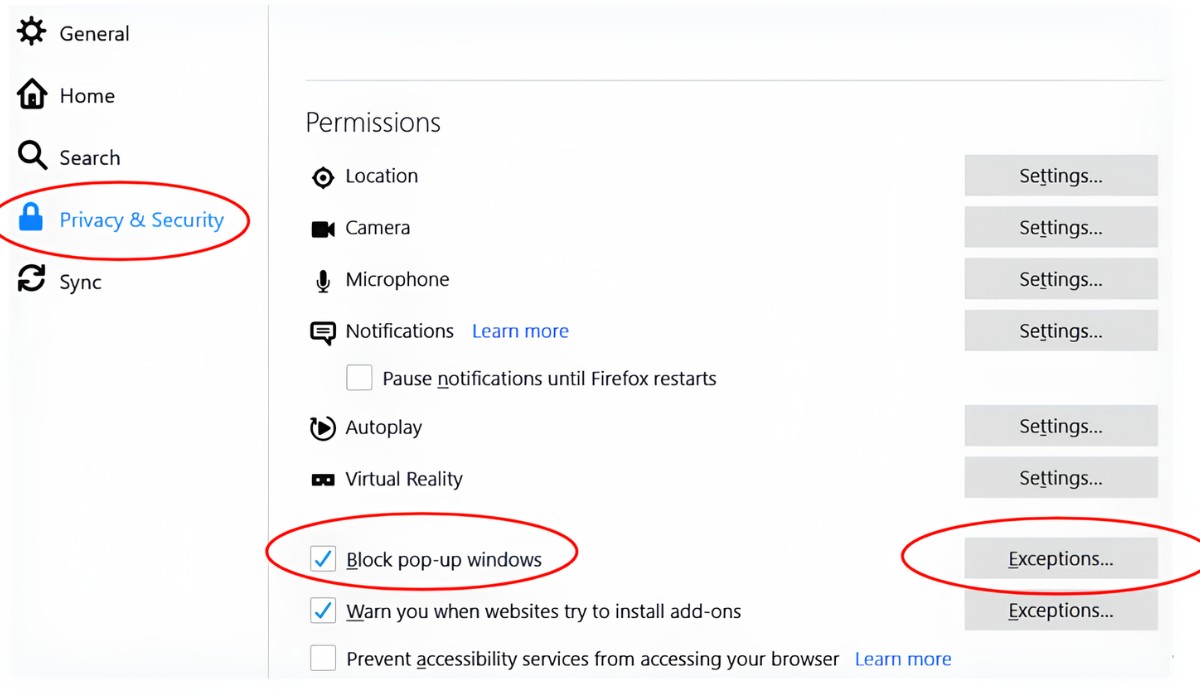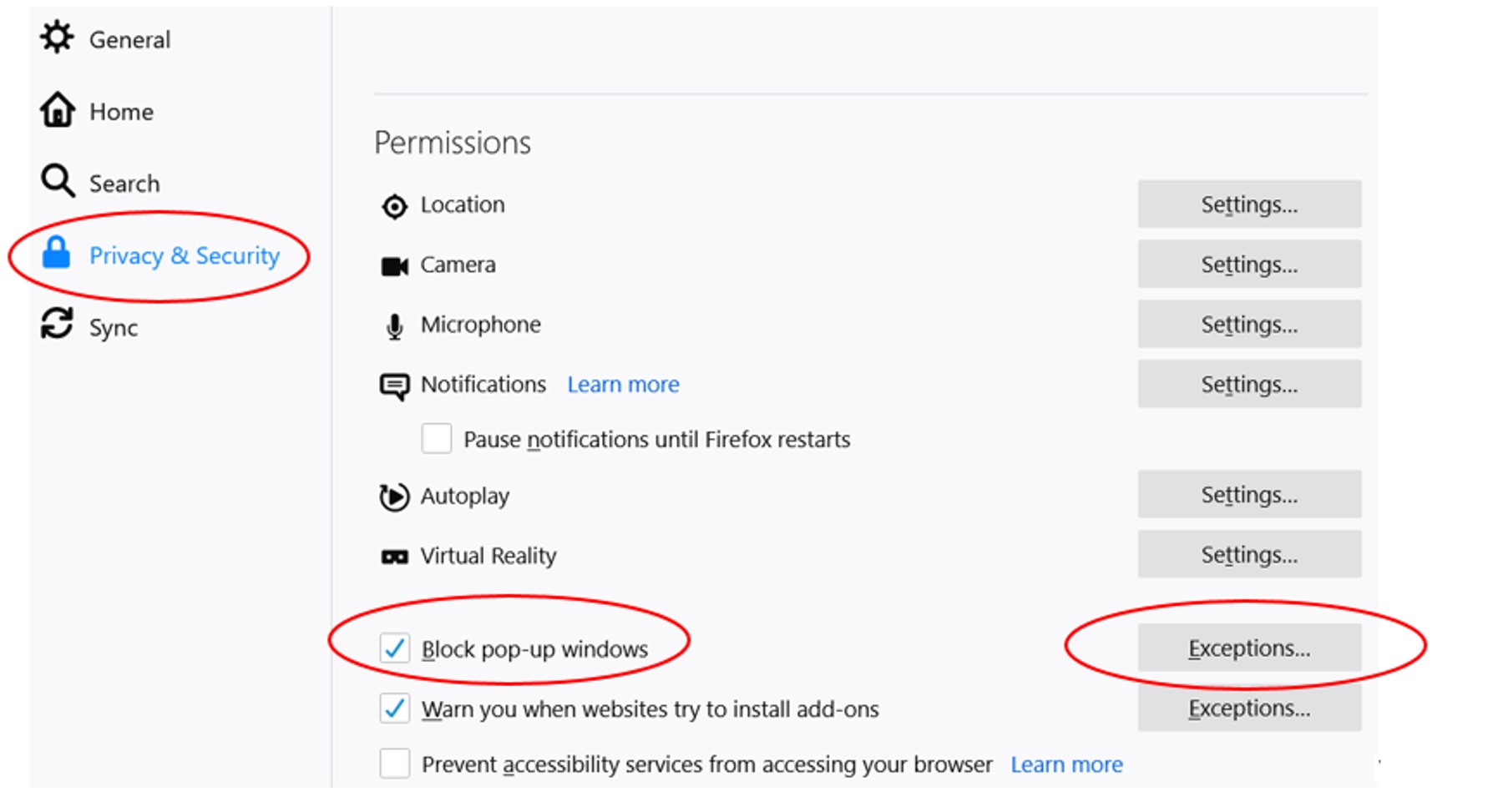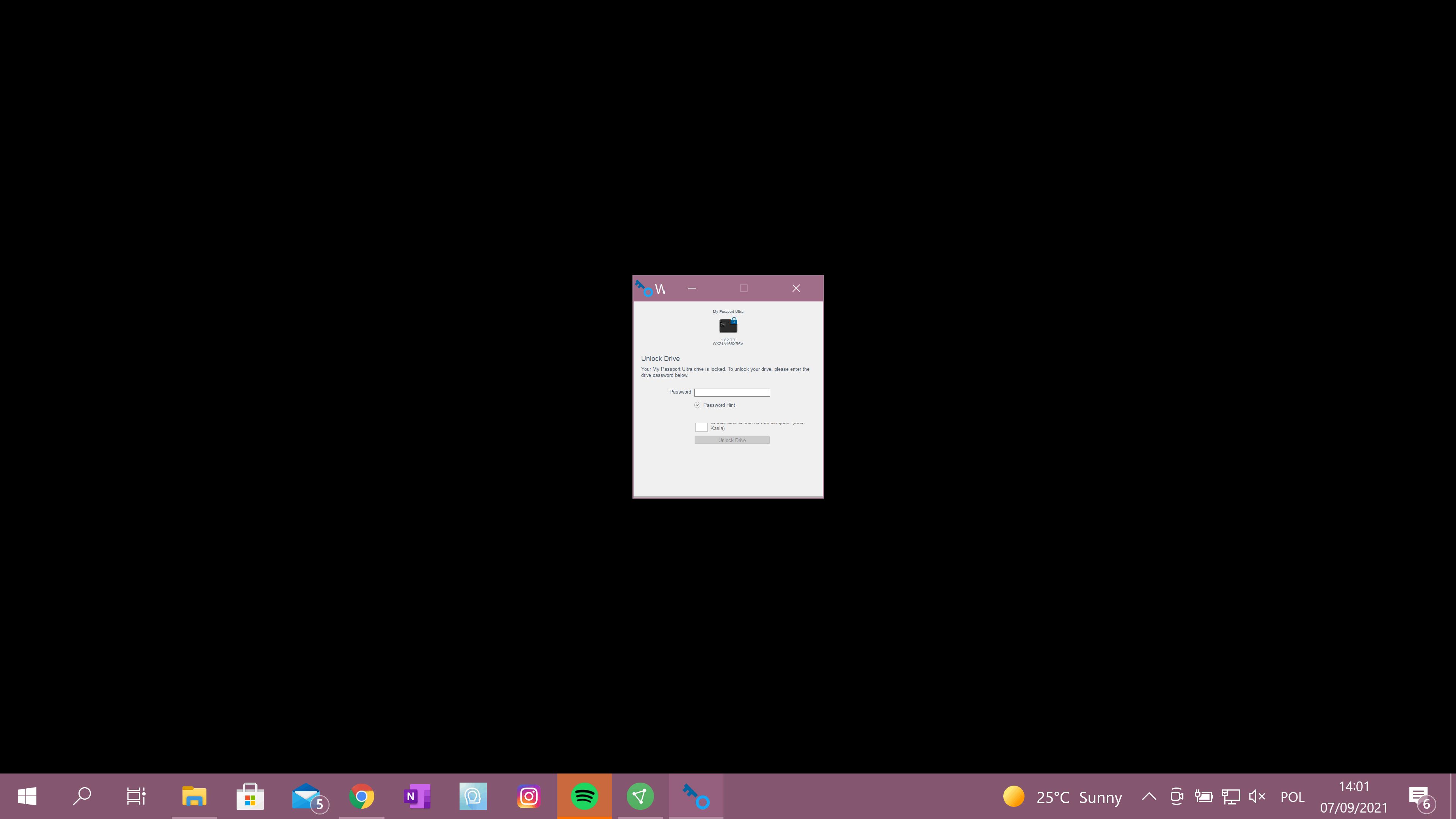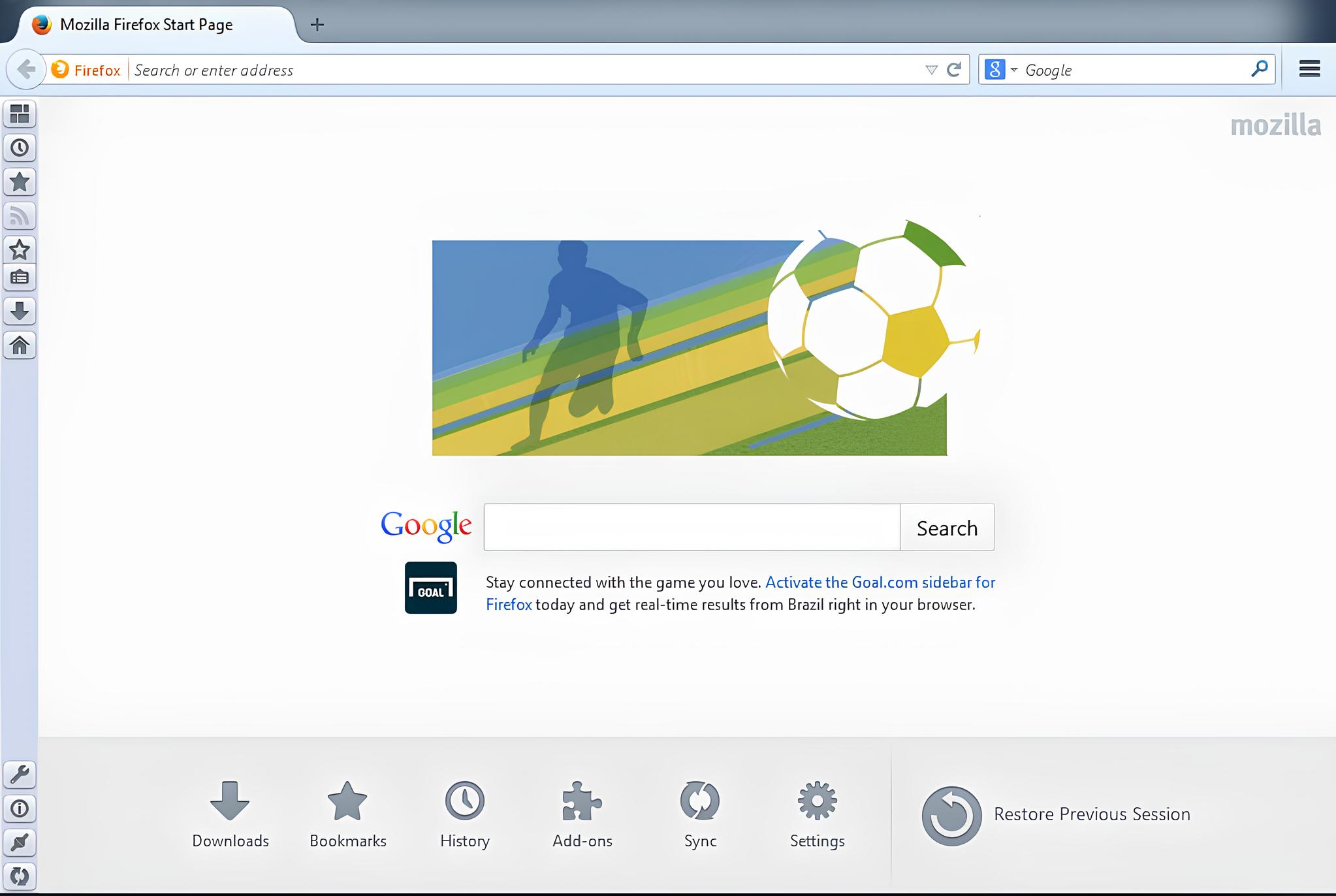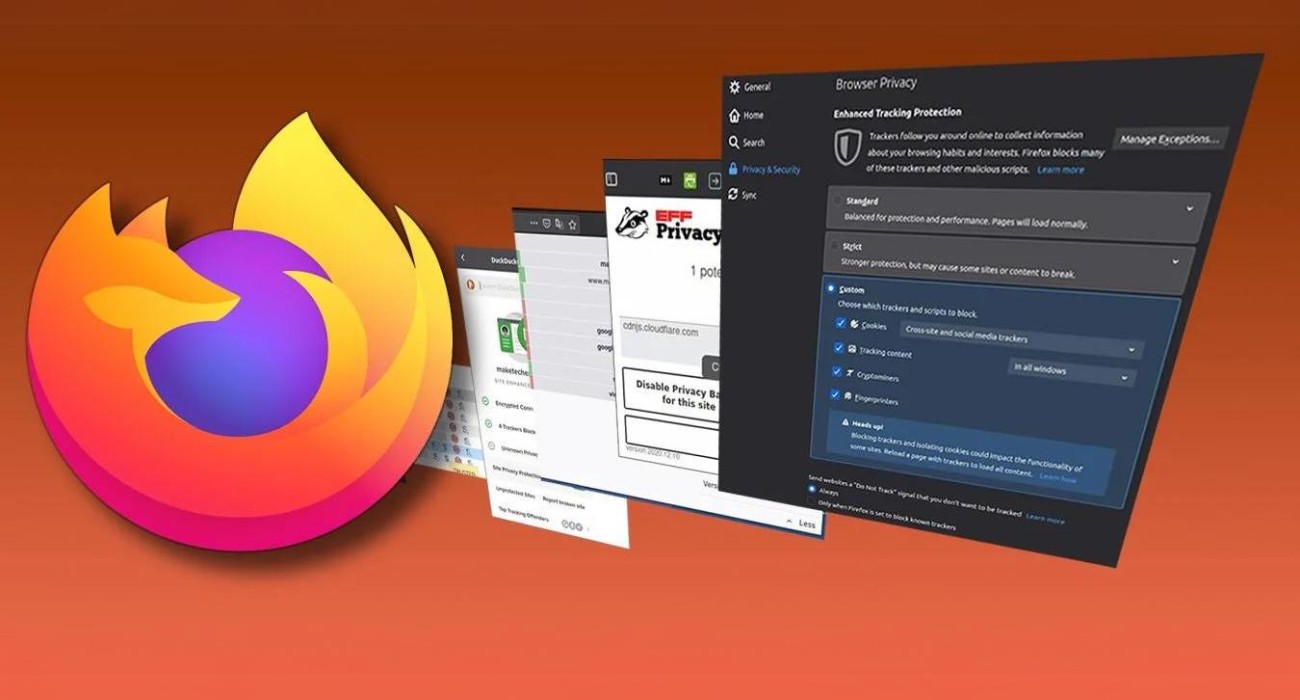Introduction
When browsing the web, encountering pop-up windows can be both frustrating and disruptive to the online experience. However, in certain situations, allowing pop-ups can be necessary for accessing specific content or functionality on websites. In the case of Firefox, a popular and versatile web browser, the built-in pop-up blocker is designed to shield users from intrusive pop-up windows while they navigate the internet. While this feature is beneficial in preventing unwanted distractions, there are instances where users may need to disable the pop-up blocker to access legitimate content or services.
In this article, we will explore the process of disabling the pop-up blocker in Firefox, providing step-by-step guidance on accessing the blocker settings and making necessary adjustments. Additionally, we will delve into the concept of managing exceptions, allowing users to selectively enable pop-ups for trusted websites while maintaining protection against unwanted pop-up windows.
By understanding how to effectively manage the pop-up blocker in Firefox, users can strike a balance between a seamless browsing experience and protection against intrusive pop-ups. Whether it's accessing essential information, utilizing web-based tools, or engaging with interactive content, having the ability to control the behavior of pop-ups empowers users to tailor their browsing experience according to their specific needs and preferences. Let's embark on this journey to uncover the inner workings of the pop-up blocker in Firefox and learn how to wield its power to our advantage.
Accessing the Pop-Up Blocker Settings
Accessing the pop-up blocker settings in Firefox is a straightforward process that allows users to customize their browsing experience according to their preferences. To begin, open the Firefox web browser on your computer or mobile device. At the top-right corner of the browser window, you will find the menu button, represented by three horizontal lines. Click on this button to reveal a drop-down menu.
Within the drop-down menu, locate and select the "Preferences" option. On some versions of Firefox, this may be labeled as "Options." Clicking on this option will open a new tab or window dedicated to Firefox settings.
Once you have accessed the settings interface, navigate to the "Privacy & Security" section. This section houses various privacy and security-related settings, including the pop-up blocker feature. Within the "Privacy & Security" section, scroll down until you find the "Permissions" subsection.
Under the "Permissions" subsection, you will find the "Block pop-up windows" option. This is where the pop-up blocker settings can be accessed and modified. By default, the checkbox next to "Block pop-up windows" is selected, indicating that the pop-up blocker is enabled. To access the pop-up blocker settings, simply click on the "Settings" button next to this option.
Clicking on the "Settings" button will open a pop-up blocker settings window, providing users with additional controls and customization options. Within this window, users can manage exceptions, adjust the level of pop-up blocking, and tailor the behavior of the pop-up blocker to suit their specific needs.
In summary, accessing the pop-up blocker settings in Firefox involves navigating through the browser's preferences to locate the "Privacy & Security" section and accessing the "Permissions" subsection. From there, users can easily access the pop-up blocker settings to make necessary adjustments and fine-tune their browsing experience.
By understanding how to access the pop-up blocker settings, users can gain greater control over their browsing environment, allowing them to strike a balance between preventing intrusive pop-ups and accessing essential content and services on the web.
Disabling the Pop-Up Blocker
Disabling the pop-up blocker in Firefox is a straightforward process that empowers users to temporarily or permanently allow pop-ups from specific websites. Whether it's accessing essential content, engaging with interactive tools, or utilizing web-based services, knowing how to disable the pop-up blocker can be invaluable in certain browsing scenarios.
To begin the process of disabling the pop-up blocker, users should first access the pop-up blocker settings as outlined in the previous section. Once within the pop-up blocker settings window, users will find the option to adjust the level of pop-up blocking. By default, the pop-up blocker is set to prevent all pop-up windows from appearing while browsing.
To disable the pop-up blocker, users can simply uncheck the box next to the "Block pop-up windows" option within the settings window. This action effectively disables the pop-up blocker, allowing pop-up windows to appear when triggered by websites. It's important to note that disabling the pop-up blocker applies to the specific browsing session and will remain in effect until the user re-enables the blocker or closes the browser.
In addition to temporarily disabling the pop-up blocker, users also have the option to manage exceptions, enabling them to allow pop-ups from specific websites while the blocker remains active for all other sites. Within the pop-up blocker settings window, users can click on the "Exceptions" button to add trusted websites to the exception list. By adding a website to the exception list, users grant permission for pop-ups to appear when visiting the specified site, providing a tailored approach to pop-up management.
By understanding how to disable the pop-up blocker in Firefox, users can navigate the web with greater flexibility, allowing them to access legitimate pop-ups while maintaining protection against unwanted and intrusive pop-up windows. Whether it's granting temporary access to specific content or adjusting the pop-up blocking behavior to suit individual preferences, the ability to disable the pop-up blocker empowers users to tailor their browsing experience according to their specific needs.
In summary, the process of disabling the pop-up blocker in Firefox involves accessing the pop-up blocker settings and adjusting the level of pop-up blocking or managing exceptions. By leveraging these features, users can effectively control the behavior of the pop-up blocker, striking a balance between preventing disruptive pop-ups and accessing essential content and services on the web.
Managing Exceptions
Managing exceptions within the pop-up blocker settings in Firefox provides users with a powerful tool to selectively enable pop-ups from trusted websites while maintaining protection against unwanted and intrusive pop-up windows. This feature empowers users to tailor their browsing experience, allowing them to access essential content and services from specific websites without compromising overall security and convenience.
To begin managing exceptions, users should first access the pop-up blocker settings within Firefox, as outlined in the previous sections. Once within the pop-up blocker settings window, users can navigate to the "Exceptions" section, which allows them to add trusted websites to the exception list.
Within the "Exceptions" section, users have the option to add specific website addresses to the exception list. By adding a website to the exception list, users grant permission for pop-ups to appear when visiting the specified site, effectively overriding the default pop-up blocking behavior for that particular website.
Adding a website to the exception list is a simple and intuitive process. Users can enter the web address of the trusted site into the provided input field and click the "Allow" button. Once added to the exception list, the specified website is granted permission to display pop-up windows, providing users with a tailored approach to managing pop-ups based on their trusted preferences.
By managing exceptions, users can ensure that essential pop-ups, such as those related to online banking, document viewing, or legitimate notifications, are allowed to appear without interference from the pop-up blocker. This level of control enables users to strike a balance between preventing disruptive pop-ups and accessing critical content and services from trusted websites.
Furthermore, the ability to manage exceptions empowers users to maintain a seamless browsing experience while upholding security and privacy standards. By selectively enabling pop-ups from trusted sources, users can navigate the web with confidence, knowing that essential content and functionality will remain accessible without being hindered by the default pop-up blocking behavior.
In summary, managing exceptions within the pop-up blocker settings in Firefox offers users a flexible and customizable approach to pop-up management. By adding trusted websites to the exception list, users can ensure that essential pop-ups are allowed while maintaining protection against unwanted pop-up windows, ultimately enhancing their browsing experience and productivity.
Conclusion
In conclusion, the pop-up blocker in Firefox serves as a valuable tool for shielding users from intrusive and disruptive pop-up windows while browsing the web. By default, the blocker is designed to prevent unwanted pop-ups, providing a seamless and distraction-free online experience. However, there are instances where users may need to disable the pop-up blocker to access essential content, utilize web-based tools, or engage with interactive services. Understanding how to effectively manage the pop-up blocker settings and make necessary adjustments empowers users to tailor their browsing experience according to their specific needs and preferences.
The process of accessing the pop-up blocker settings involves navigating through the browser's preferences to locate the "Privacy & Security" section and accessing the "Permissions" subsection. From there, users can easily access the pop-up blocker settings to make necessary adjustments and fine-tune their browsing experience. This level of control allows users to strike a balance between preventing intrusive pop-ups and accessing essential content and services on the web.
Disabling the pop-up blocker in Firefox is a straightforward process that empowers users to temporarily or permanently allow pop-ups from specific websites. By understanding how to disable the pop-up blocker, users can navigate the web with greater flexibility, allowing them to access legitimate pop-ups while maintaining protection against unwanted and intrusive pop-up windows. Whether it's granting temporary access to specific content or adjusting the pop-up blocking behavior to suit individual preferences, the ability to disable the pop-up blocker empowers users to tailor their browsing experience according to their specific needs.
Furthermore, managing exceptions within the pop-up blocker settings provides users with a powerful tool to selectively enable pop-ups from trusted websites while maintaining protection against unwanted and intrusive pop-up windows. This feature empowers users to tailor their browsing experience, allowing them to access essential content and services from specific websites without compromising overall security and convenience. By managing exceptions, users can ensure that essential pop-ups are allowed while maintaining protection against unwanted pop-up windows, ultimately enhancing their browsing experience and productivity.
In essence, understanding how to effectively manage the pop-up blocker in Firefox equips users with the knowledge and tools to navigate the web with confidence, striking a balance between preventing disruptive pop-ups and accessing critical content and services from trusted sources. By leveraging the features and customization options within the pop-up blocker settings, users can tailor their browsing experience to suit their specific needs, ensuring a seamless and productive online journey.







